
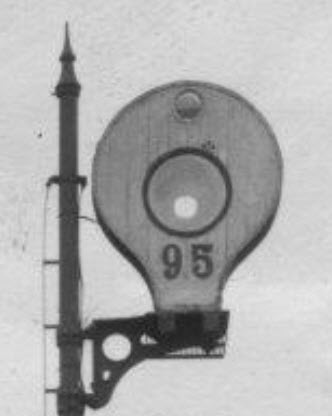


Ball Signals
Banjo Signals
Banner Box Signals
Smashboard Signals
Tilting Target Signals
Semaphore Signals
These pages covers signals that have
(mostly) gone the way of the steam engine. Pretty soon, we will be able to
add B&O CPL and Pennsy PL signals to this page at the rate they are being replaced by color
light signals.
This page covers signals known as Banjo Signals.
Thomas Seavy Hall invented the Banjo signal in 1869, two years before forming the Hall
Signal Company. It is given that name because of it's appearance, and how it
resembles the bottom of an inverted banjo. The invention of the Banjo signal
predates that of the semaphore by about ten years.
US&S made a similar signal, usually
referred to as a Banner signal.... I will have to see if I can come up with a
non-copyrighted picture of one, Brian Solomon has a picture of one on the B&M in
his book.
Banjo signals work by an actuating mechanism
pulling a hoop covered with a colored piece of fabric (commonly silk), in front of an opening so
the engineer could see it by day, and some of them had a much smaller window at
the top which was illuminated for night time operation - the color was the same
as the main indication. As far as I can tell from the resources I
have come across, Banjo signals were two aspect.
Banjo signals were failsafe, and operated
magnetically. The clear banner would be pulled into view by an
electromagnet, and when de-energized, would allow the clear disc to fall out of
sight by gravity. The two "lenses" were attached to the same arm so they
would move together - the arm also (usually) had a counterweight. Since
the larger one was heavier, the pivot point was placed so it would let gravity
act on it, pulling both discs out of sight. According to Solomon, two
magnets were used, one to move the lens into position, and another to hold it in
place (similar to the operation of a semaphore, where a lesser current was used
to maintain the semaphore in position once pulled into place using a larger
current). Thanks to John Ingham of the U.K. for correcting my oversight on
Banjo signals not being failsafe.
Because Banjo signals were only two
aspect, they were usually used in pairs on the mainline, one used as a home
signal and the other a distant, or approach signal. If the next
signal was showing a red (we call it stop, but back then it was called a danger
signal), the distant signal would display a blue, which was common in those days
for that aspect. The picture below from the Reading has obviously been
updated to show the "newer" colors. Also remember that back in the very
early days of railroading, a clear signal was usually indicated by white, and
not green.
There are few remaining examples of
this signal type around. Julie Johnson of the Illinois Railway Museum
estimates that there are around a dozen or so of these signals left in
existence, the majority of which are in museum collections. I am aware of
banjo signals at the IRM in Union IL, Orange Empire in Perris CA, and the
Railroad Museum of PA, in Strasburg. The first picture set below is
from one of the few known signals that is in private hands.
One source of info used above is
from Brian Solomon's book (2003) Railroad Signaling,
and is easily found almost everywhere.
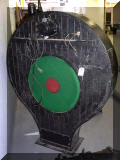
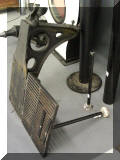
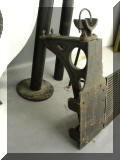
The pictures above are of a banjo signal that recently
sold on EBay for $15,000, the auction ended on Sep 14th, 2007. Altho the
listing stated that the date on the signal was 1843, the signal was probably
from much later. Looking at the photo below, you can easily see how the mounting
bracket was attached to the mast and used to support the signal.
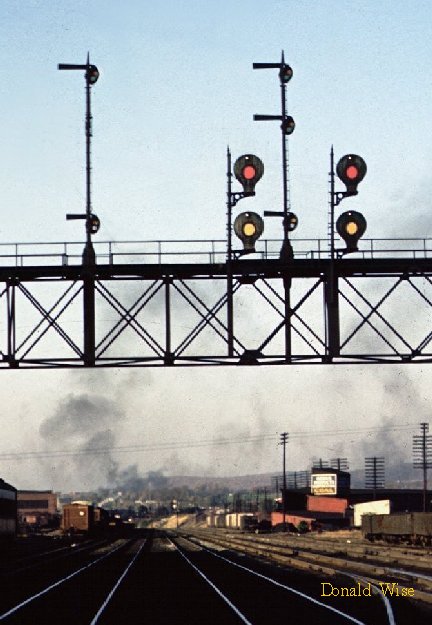
This photo, by Donald Wise, was taken in Reading
PA, sometime in the early 40's (I believe)....ah, the good ole days! This
is one of the very few pictures I have come across on the internet and was well
"hidden" (it took a lot to come across it :-).
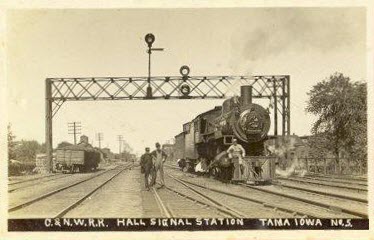
Another photo I came across on the internet, not sure where, but
it shows a banjo installation on the CNW in Iowa.
Notice the semaphore also in use, possibly in conjunction with the banjo signal?
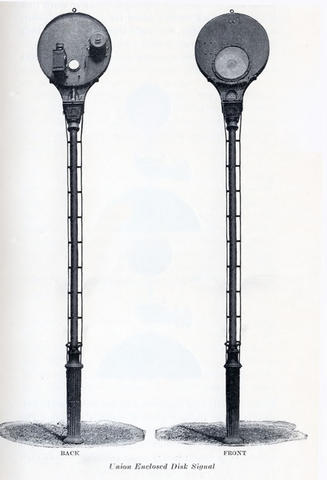
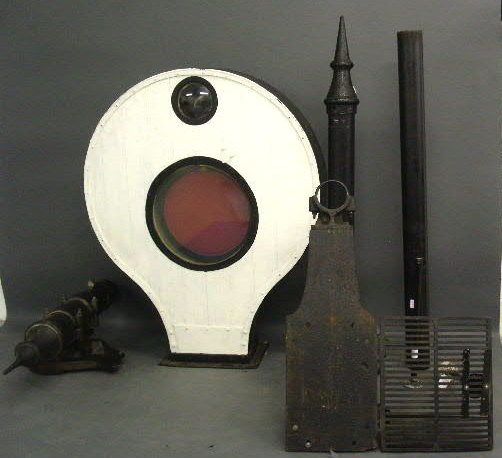
Left: Picture from an early US&S catalog.
On the right, a picture of a Banjo signal sold by Wiederseim Auctions, the projected price was $7000-9000, but sold for $15K....
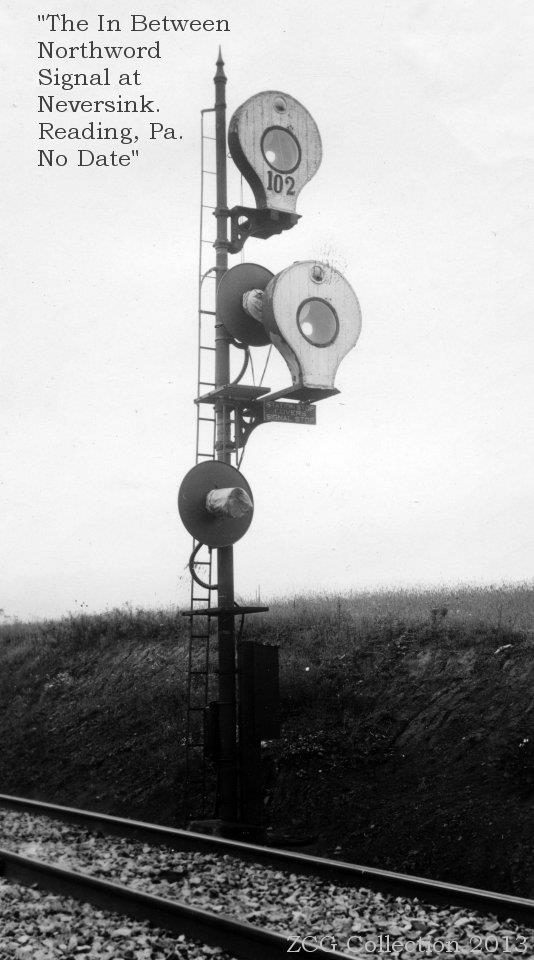
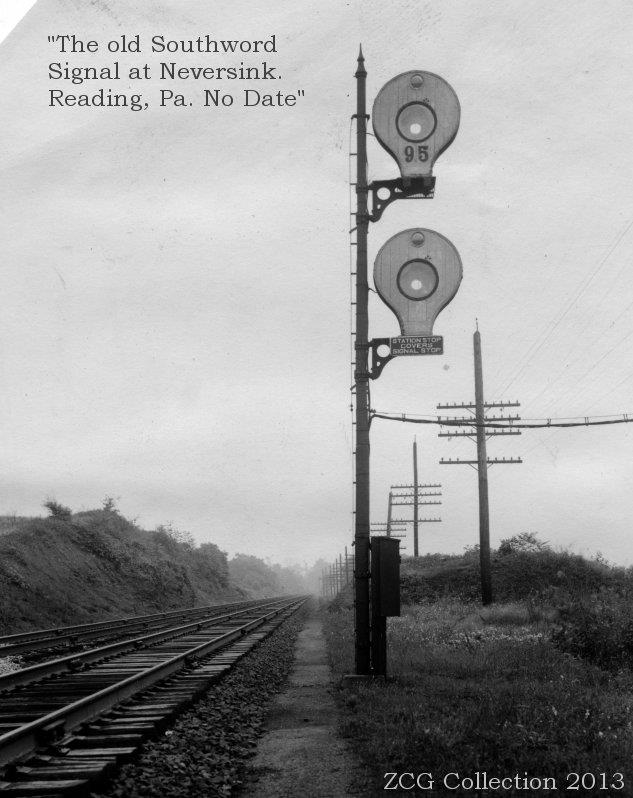
It seems as if most of the pictures floating around of Banjo signals come off the Reading RR for some reason.
These two are no exception, and we thank Zak for finding them and posting them on the web.....
Many, many more pictures of his can be found here
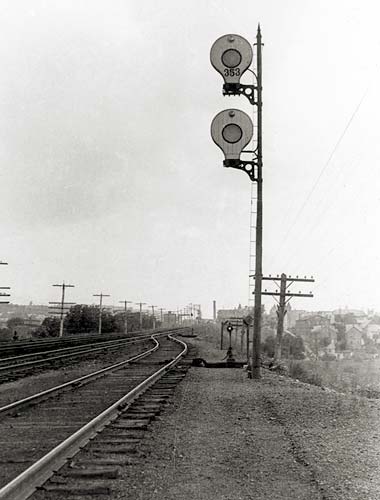
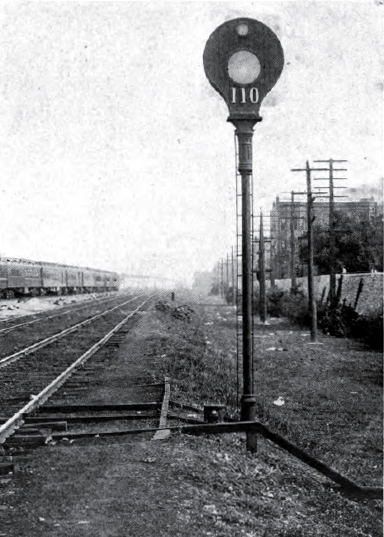
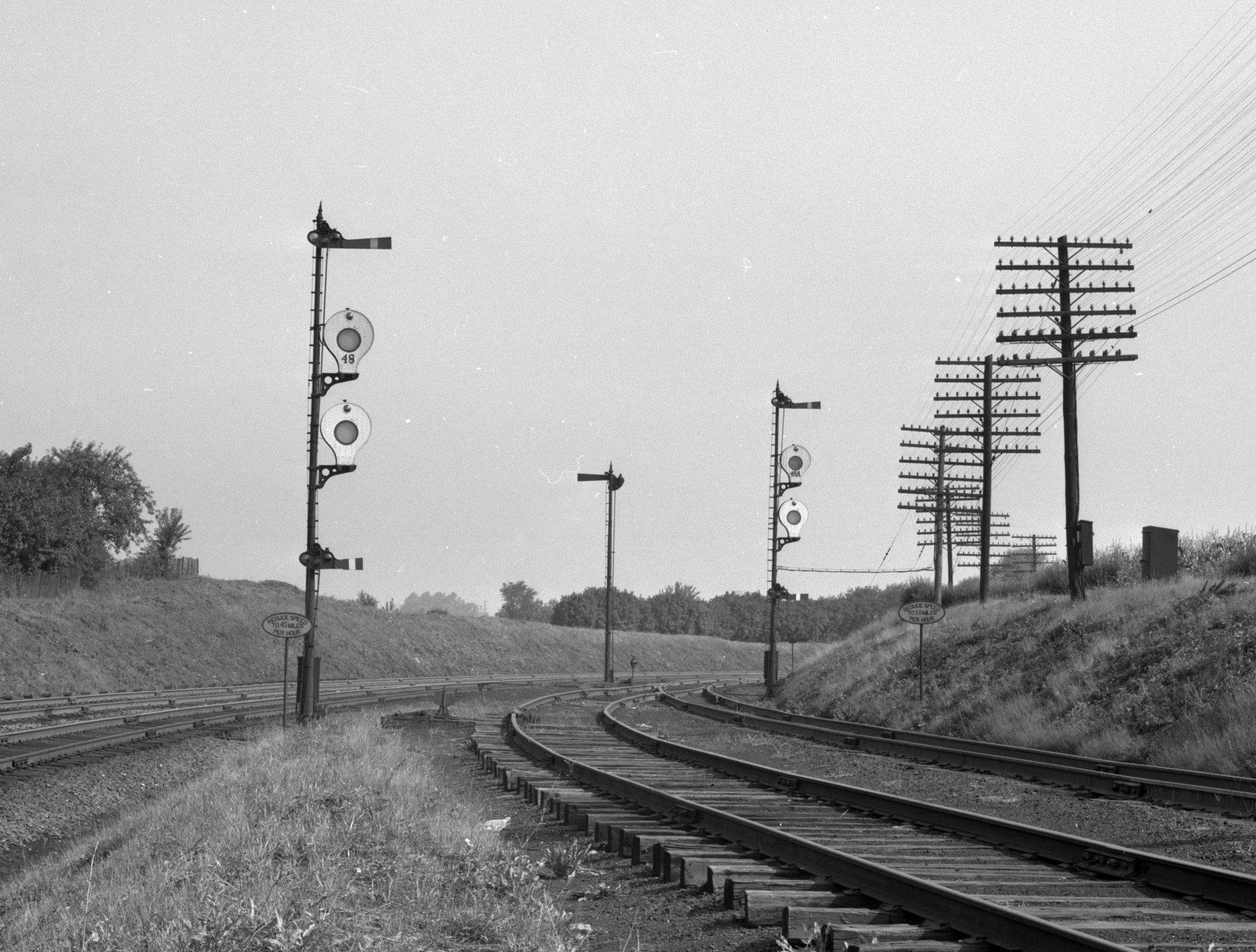
Disclaimers:
I love trains, and I love signals. I am not an expert. My webpages reflect what I find on the topic of the page. This is something I have fun with while
trying to help others.
Please Note: Since the main focus of my two websites is railroad signals, the railfan guides are oriented towards the signal fan being able to locate them.
For those of you into the modeling aspect of our hobby, my
indexa page has a list of almost everything railroad oriented
I can think of to provide you with at least a few pictures to help you detail your pike.
If this is a railfan page, every effort has been made to make sure that the information contained on this map and in this railfan guide is correct. Once in a while,
an error may creep in :-)
My philosophy: Pictures and maps are worth a thousand words, especially for railfanning. Text descriptions only get you so far, especially if you get lost or
disoriented. Take along good maps.... a GPS is OK to get somewhere, but maps are still better if you get lost! I belong to AAA, which allows you to get
local maps for free when you visit the local branches. ADC puts out a nice series of county maps for the Washington DC area, but their state maps do not have the
railroads on them. If you can find em, I like the National Geographic map book of the U.S..... good, clear, and concise graphics, and they do a really good job
of showing you where tourist type attractions are, although they too lack the railroads. Other notes about specific areas will show up on that page if known.
Aerial shots were taken from either Google or Bing Maps as noted. Screen captures are made
with Snagit, a Techsmith product... a great tool if you have never used it!
By the way, floobydust is a term I picked up 30-40 years ago from a National Semiconductor data book, and means miscellaneous
and/or other stuff.
Pictures and additional information is always needed if anyone feels inclined to take 'em, send 'em, and share 'em, or if you have something to add or correct.... credit
is always given! Please be NICE!!! Contact info is here
Beware: If used as a source, ANYTHING from Wikipedia must be treated as being possibly inaccurate, wrong, or not true.
RAILFAN GUIDES HOME
RAILROAD SIGNALS HOME
New 1-1-2021
Last Modified On:
01-Jan-2021